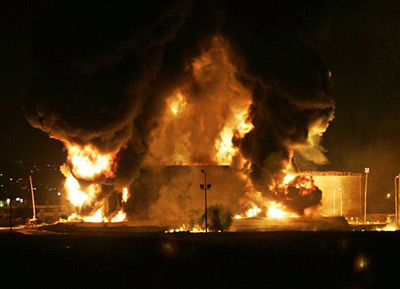|
|
- Pollution of the
coast due to oil spills which causes significant
risks to marine and land biodiversity.
- The deterioration of ecosystem due to the
fires.
- The impact of military actions on the
ecosystem, animal and plant resources.
- Emissions of dust and particles from
construction sites
- Air pollution due to the fire in the Jiyeh
power plant.
- Contamination of water by the leak of
multi-chlorine Biphenyl from the affecter
transformers.
- Contamination of soil from the Biphenyl where
varying degrees of hydro-carbonated materials in
the electricity power plant in Jiyeh, fuel
warehouses in the Beirut airport, and in the gas
stations that were demolished.
- Water pollution from fuel leakage from the
affected stations, and the impact of fuel on
maritime oil spills.
- Contamination of soil by contaminants from
fuel combustion in the Jiyeh and Beirut
International Airport.
- Damages affecting the construction sector
seemed clear through the destruction of
buildings and the waste left behind. The
estimated size of rubble is between 2.5 to 4
million cubic meters.
- Loss of forest cover: The bombing and burning
of forests and woods led to the loss of 1800
hectares of forest [tree] cover, which
contributes to increasing the air pollution, as
it could cause an increase the number of lands
subject to desertification.
- The effects of oil spills: The "Israeli" air
force poured its anger on the fuel tanks that
supplied the Jiyeh power plant with energy,
therefore leading to the contamination of at
least 27 sites starting from the Lebanese coast
northern Jiyeh. It is equivalent to 15 thousand
tons of fuel oil, covering two thirds of the
Lebanese coast, and forming an oil slick that
reached a density 40 cm, and the wind
contributed in extending the slick towards the
north by 150 km to reach the Syrian coast, and
went deep into the sea to reach some 30 km.
 |